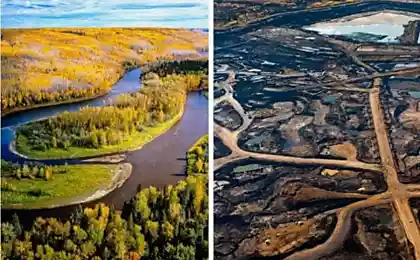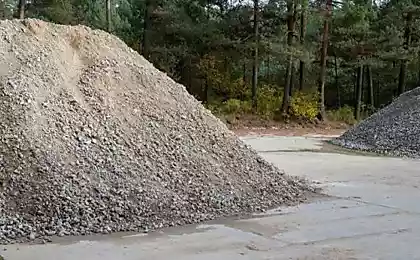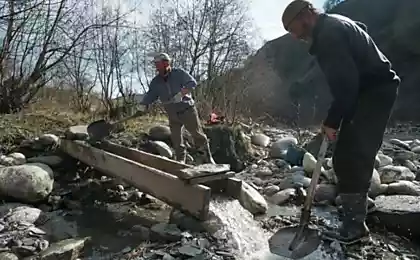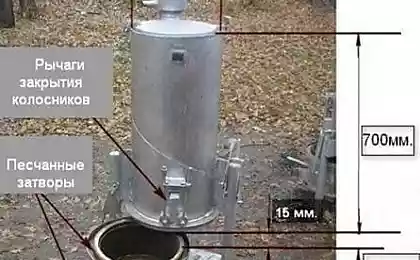862
Canada's oil sands
Development naftenosnogo sand deposits made Canada one of the major oil powers. However, it also brought environmental problems here ...
10 ph via Bigpicture
1. The road to the airport in Fort McMurray, Alberta, Canada, is unlikely to be called the most desolate. Thousands of workers go on it every day in the industrial plants that produce are the so-called oil sands. It seems that the region provided work for profit companies and government privileges in the decades ahead. The fee for this - the poisoned waters and released into the atmosphere greenhouse gases. (Jon Lowenstein / Consequences by NOOR)
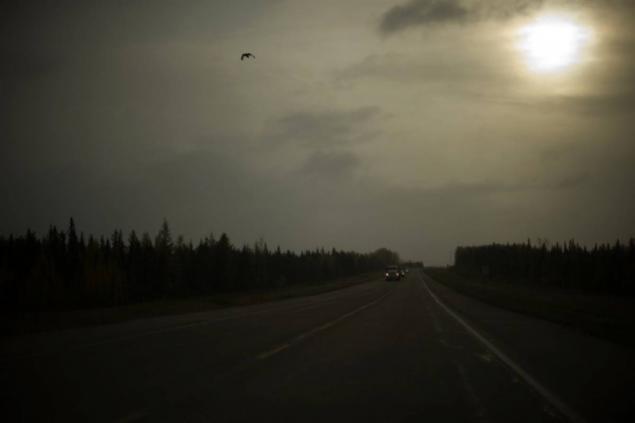
2. One of the first plants to process oil sands in Alberta for five years is abandoned. The three main fields of Alberta are on the territory of 54 000 sq. miles, virtually uninhabited, but wooded land and peat bogs. There may be about 1, 7 trillion barrels of bitumen. However, the production of oil from sand is much more expensive. The development of approximately 10% of local deposits has helped the economy to recover in 2006, making Canada the second largest custodian of oil reserves in the world after Saudi Arabia. These deposits make Canada one of the largest manufacturers of petrol in the world. These oil sands bitumen consist of natural (semi-solid form of natural oil), sand, clay and water. (Jon Lowenstein / Consequences by NOOR)
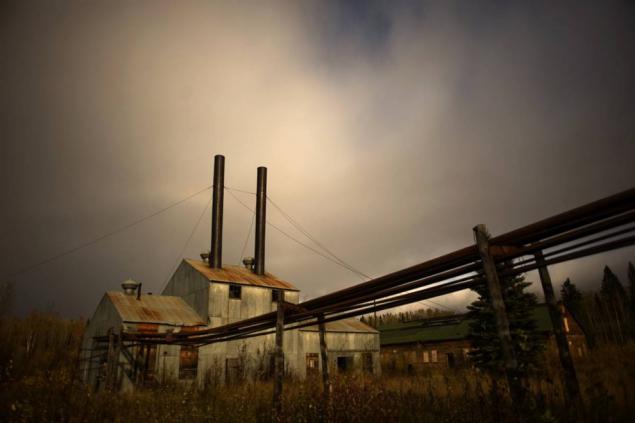
3. In this photo you see a mechanic Bob Goerlitz and meager landscape - photographer Jon Lowenstein says it took this picture to show a link between plant workers and their "natural environment." "Attached to the image of each person photo tree, I hope to draw attention to the global nature of the oil industry and the destruction of the northern forests, which grow on the bitumen deposits." Goerlitz also displays the prosperity and well-being, which brings this work. This resident of Alberta is working 12 hours a day for 20 days followed by 10 days rest. His salary for the 20 days net of $ 6,500. (Jon Lowenstein / Consequences by NOOR)
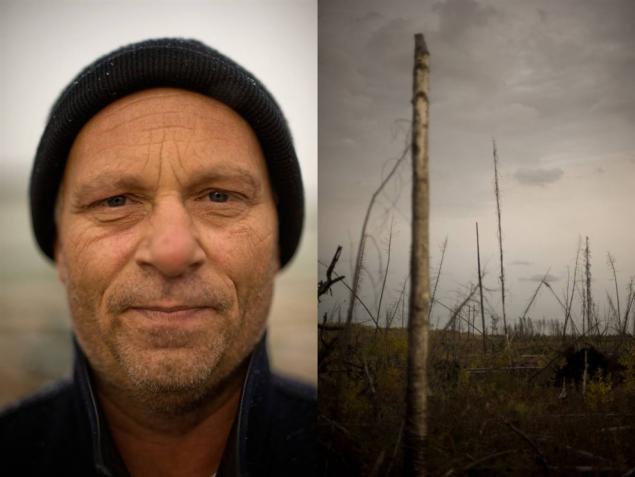
4. Ed Cooper - a member of the indigenous community of Fort McKay, about an hour's drive north of Fort McMurray. Although the community has lost its territory, it will also get more financial support, and many of its members work in local factories. In Fort McMurray even has a cute nickname: Fort McManaman (from the English. "Money" - money). (Jon Lowenstein / Consequences by NOOR)
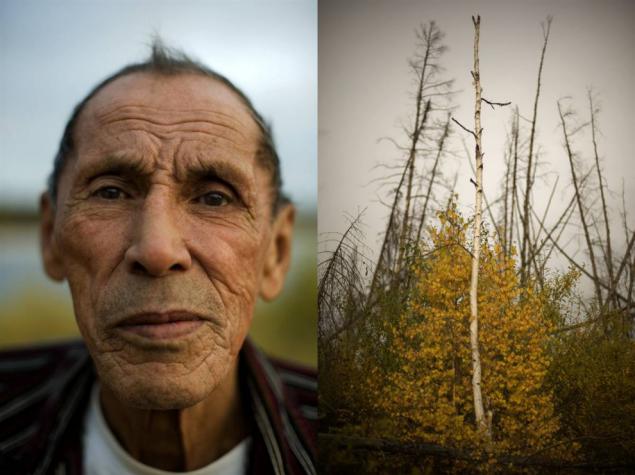
5. 5-year-old Riley McClean lives in Fort McMurray. Her whole family works in the factory on processing of oil sands. Even her grandmother moved here to be closer to family, work at the plant in Addiction. (Jon Lowenstein / Consequences by NOOR)

6. Smoke and flames from the plant for processing oil sands into oil light up the night. A study conducted in 2006 at Simon Fraser University, has shown that the processing plants of oil sands produce five times more greenhouse gas emissions than conventional oil pan. Moreover, around the plants cut down forests, releasing into the atmosphere even more carbon dioxide. (Jon Lowenstein / Consequences by NOOR)
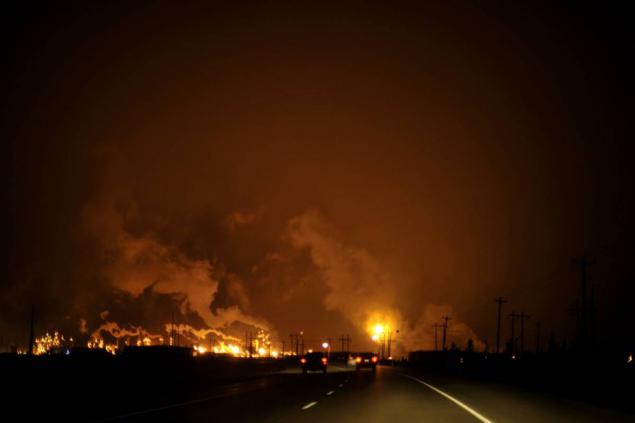
7. This processing plant is located in the oil sands north of Fort McMurray. In 2007, Alberta passed a law requiring the reduction of emission intensity by 12% compared to the levels that were in 2003-2005. (Jon Lowenstein / Consequences by NOOR)
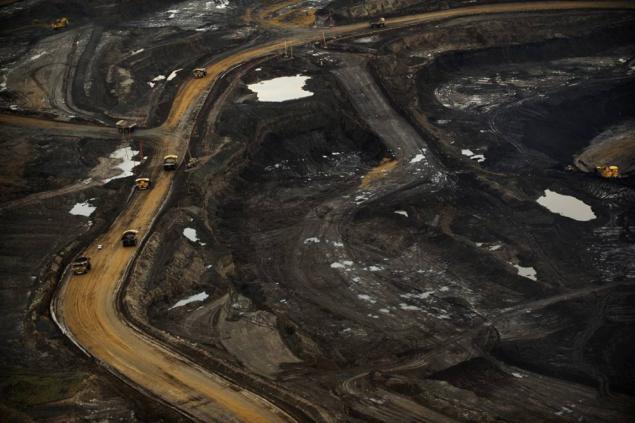
8. In the background you can see «Syncrude» - the largest producer of refinery oil sands in Canada. Expert Environmental Services Steve Gaudet said that the company has decided to restore the local area almost to their original form as soon as oil production is completed. Some areas have already been restored, there was already about 300 bison grazing. Also in the photo is visible waste storage pond - a by-product of mining. The pond contains clay, water, sand, hydrocarbons and heavy metals remaining after water washed sand oil during cleavage. These drives are quite toxic waste, in 2008 there were killed about 1,500 ducks. Noise generators, created specifically to scare birds, did not help. «Syncrude» may face charges. (Jon Lowenstein / Consequences by NOOR)
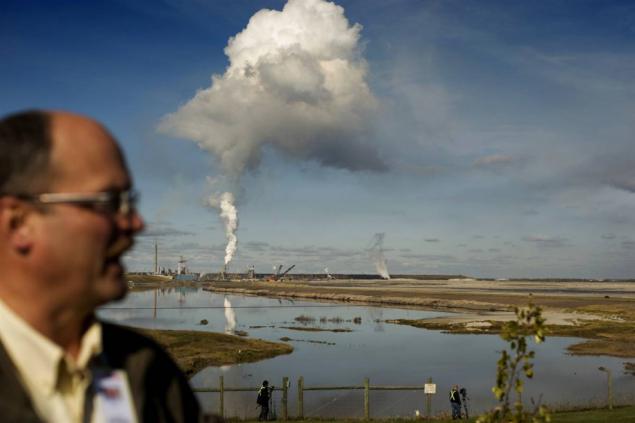
9. This work camp - one of the many scattered areas around the plant for processing oil sands. Some workers live here for free, others have to pay. The food here three times a day, there is a recreation room, and every worker - has its own separate room. "Many people in Fort McMurray were afraid that I have received another negative story about the oil industry, which reflected badly on their city - said photographer John Lowenstein. - I struggled to convey the story and relate the facts together. Yes, the impact on the environment has a negative refining process, and yet we are all involved in this. I fill the car several times a week, at least 56 liters of gasoline. I am also part of the story and trying to pass it. " (Jon Lowenstein / Consequences by NOOR)
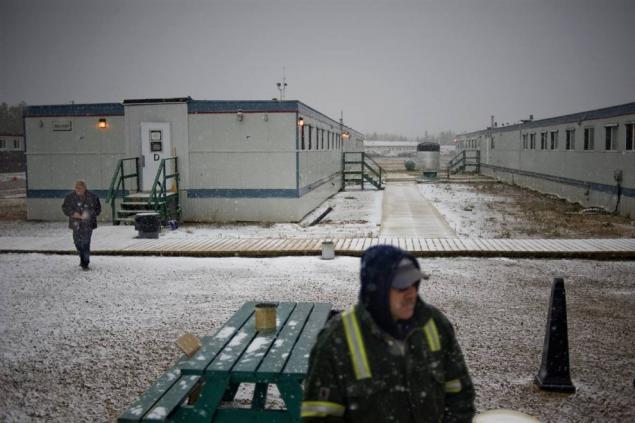
10. Deposits in Lake Athabasca - the largest deposits of natural bitumen in the world and one of the three largest deposits of oil sands in Alberta (the first two - Peace River and Cold Lake). Lake Athabasca - the only major body of water in the world, which is suitable for large-scale open pit, although most of the oil here can only be obtained with the help of a newly developed technology. (Jon Lowenstein / Consequences by NOOR)
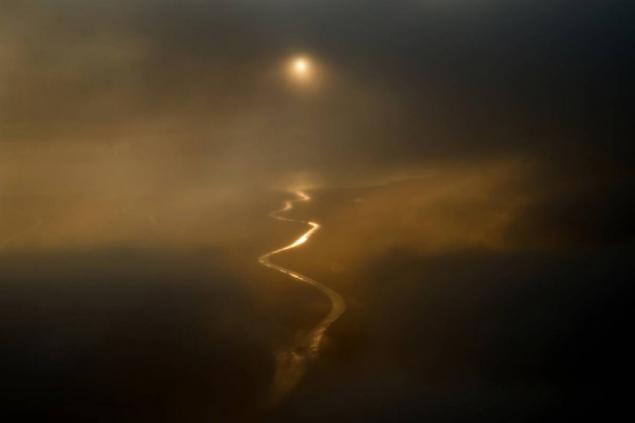
Source:
10 ph via Bigpicture
1. The road to the airport in Fort McMurray, Alberta, Canada, is unlikely to be called the most desolate. Thousands of workers go on it every day in the industrial plants that produce are the so-called oil sands. It seems that the region provided work for profit companies and government privileges in the decades ahead. The fee for this - the poisoned waters and released into the atmosphere greenhouse gases. (Jon Lowenstein / Consequences by NOOR)

2. One of the first plants to process oil sands in Alberta for five years is abandoned. The three main fields of Alberta are on the territory of 54 000 sq. miles, virtually uninhabited, but wooded land and peat bogs. There may be about 1, 7 trillion barrels of bitumen. However, the production of oil from sand is much more expensive. The development of approximately 10% of local deposits has helped the economy to recover in 2006, making Canada the second largest custodian of oil reserves in the world after Saudi Arabia. These deposits make Canada one of the largest manufacturers of petrol in the world. These oil sands bitumen consist of natural (semi-solid form of natural oil), sand, clay and water. (Jon Lowenstein / Consequences by NOOR)

3. In this photo you see a mechanic Bob Goerlitz and meager landscape - photographer Jon Lowenstein says it took this picture to show a link between plant workers and their "natural environment." "Attached to the image of each person photo tree, I hope to draw attention to the global nature of the oil industry and the destruction of the northern forests, which grow on the bitumen deposits." Goerlitz also displays the prosperity and well-being, which brings this work. This resident of Alberta is working 12 hours a day for 20 days followed by 10 days rest. His salary for the 20 days net of $ 6,500. (Jon Lowenstein / Consequences by NOOR)

4. Ed Cooper - a member of the indigenous community of Fort McKay, about an hour's drive north of Fort McMurray. Although the community has lost its territory, it will also get more financial support, and many of its members work in local factories. In Fort McMurray even has a cute nickname: Fort McManaman (from the English. "Money" - money). (Jon Lowenstein / Consequences by NOOR)

5. 5-year-old Riley McClean lives in Fort McMurray. Her whole family works in the factory on processing of oil sands. Even her grandmother moved here to be closer to family, work at the plant in Addiction. (Jon Lowenstein / Consequences by NOOR)

6. Smoke and flames from the plant for processing oil sands into oil light up the night. A study conducted in 2006 at Simon Fraser University, has shown that the processing plants of oil sands produce five times more greenhouse gas emissions than conventional oil pan. Moreover, around the plants cut down forests, releasing into the atmosphere even more carbon dioxide. (Jon Lowenstein / Consequences by NOOR)

7. This processing plant is located in the oil sands north of Fort McMurray. In 2007, Alberta passed a law requiring the reduction of emission intensity by 12% compared to the levels that were in 2003-2005. (Jon Lowenstein / Consequences by NOOR)

8. In the background you can see «Syncrude» - the largest producer of refinery oil sands in Canada. Expert Environmental Services Steve Gaudet said that the company has decided to restore the local area almost to their original form as soon as oil production is completed. Some areas have already been restored, there was already about 300 bison grazing. Also in the photo is visible waste storage pond - a by-product of mining. The pond contains clay, water, sand, hydrocarbons and heavy metals remaining after water washed sand oil during cleavage. These drives are quite toxic waste, in 2008 there were killed about 1,500 ducks. Noise generators, created specifically to scare birds, did not help. «Syncrude» may face charges. (Jon Lowenstein / Consequences by NOOR)

9. This work camp - one of the many scattered areas around the plant for processing oil sands. Some workers live here for free, others have to pay. The food here three times a day, there is a recreation room, and every worker - has its own separate room. "Many people in Fort McMurray were afraid that I have received another negative story about the oil industry, which reflected badly on their city - said photographer John Lowenstein. - I struggled to convey the story and relate the facts together. Yes, the impact on the environment has a negative refining process, and yet we are all involved in this. I fill the car several times a week, at least 56 liters of gasoline. I am also part of the story and trying to pass it. " (Jon Lowenstein / Consequences by NOOR)

10. Deposits in Lake Athabasca - the largest deposits of natural bitumen in the world and one of the three largest deposits of oil sands in Alberta (the first two - Peace River and Cold Lake). Lake Athabasca - the only major body of water in the world, which is suitable for large-scale open pit, although most of the oil here can only be obtained with the help of a newly developed technology. (Jon Lowenstein / Consequences by NOOR)

Source:
